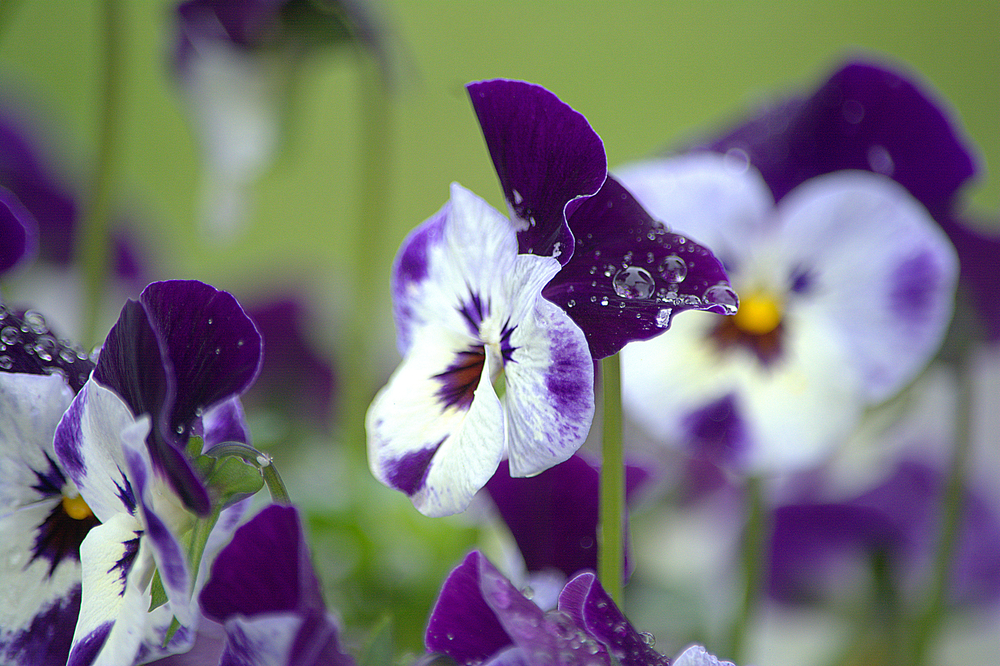Gardening expert reveals ten plants to grow that will endure a cold snap, and the six to avoid
British weather being as unpredictable as ever, we often face cold snaps throughout autumn, winter and into spring. Seeing the temperature plummet (often overnight), it can be hard to know how to save your garden from harsh conditions. Mark Lane, gardening expert for stairlift and home lift company Stannah and BBC Gardeners’ World presenter, shares his advice to stop cold snaps terrorising your garden.
When it comes to plants and our changing climate, we are learning more about drought-tolerant plants during the growing period, but we don’t necessarily see much advice for growing plants outdoors during the colder months, especially with high winds, storms, intense rainfall, flooding, and freezing temperatures. Of course, winter-proofing your garden should be the first port of call each year, but here are some practical steps to take and plants to grow or avoid during a snap.
When it comes to plants, prune to prevent
Transpiration is the process by which moisture is carried through plants from roots to small pores on the underside of leaves, where it changes to vapour and is released to the atmosphere. Transpiration is essentially evaporation of water from plant leaves. Transpiration also includes a process called guttation, which is the loss of water in liquid form from the uninjured leaf or stem of the plant, principally through water stomata. Wind is a great contributor to transpiration, as is a cold snap, which is why the advice is to prune back plants, like herbaceous perennials.
Bring vulnerable plants indoors
In the short-term, cut back plants that are prone to wind rock and cold, such as shrub roses, Lavatera and Buddleia, by between a third and half of their height in the autumn and bring vulnerable plants like Olea europaea (olive) indoors.
When it comes to protection some many materials and products can be used to insulate and protect plants, whether grown in the ground or in pots or containers. Horticultural fleece and hessian can be wrapped around plants and clay pots or containers, recycled bubble wrap can be used like a winter duvet around pots and containers as can plastic bags filled with other plastic bags, cloches can protect young plants and seedlings and cold frames and greenhouses will keep out the rain and wind for more tender plants. A porch will also protect tender plants from the worst of the cold weather.
Simply collecting all pots and containers and arranging them next to each other in a protected area, such as up close to the wall of the house, will help plants and bulbs during the colder months.
Here are some plants that can help keep your garden looking beautiful and vibrant even during cold snaps. Remember to choose varieties that are well-suited to your specific location and soil conditions. Gardening during the winter can be a rewarding experience, and these cold-tolerant plants will certainly contribute to a more colourful garden during the chilly season, whether in hanging baskets or plant beds.
Ten plants that will survive a cold snap:
Snowdrops (Galanthus spp.) Snowdrops are another early bloomer. Their delicate white flowers add a touch of elegance to the winter garden.
Winter jasmine (Jasminum nudiflorum) This deciduous shrub produces bright yellow flowers on bare stems during winter. It’s a fantastic addition to a cold-weather garden.
Witch hazel (Hamamelis spp.) Witch hazel produces spidery, fragrant flowers in the dead of winter. Their unique appearance and scent make them a must-have for winter gardens.
Cyclamen (Cyclamen spp.) Cyclamen plants have charming, marbled leaves and vibrant, butterfly-like flowers. They thrive in cool temperatures.
Winter pansies (Viola wittrockiana) These colourful annuals can endure chilly temperatures and add a pop of colour to winter containers or borders.
Christmas rose (Helleborus niger) This hellebore species, also known as the Christmas rose, produces white blooms with a hint of pink. It’s a lovely addition to winter gardens.
Sarcococca (Sarcococca spp.) Known as sweet box, this shrub has small, fragrant white flowers in late winter and early spring. It’s excellent for shady areas.
Winterberry (Ilex verticillata) Winterberry shrubs offer vibrant red berries throughout the winter, providing a valuable food source for birds.
Primroses (Primula vulgaris) Primroses are one of the earliest spring bloomers and come in a variety of colours. They’re great for brightening up the garden.
English Ivy (Hedera helix) English Ivy is an evergreen vine that provides year-round interest. Its dark green leaves are especially striking in winter.
On the other hand, these plants aren’t likely to fare well during a cold snap, so it’s worth bringing them inside or under cover if possible. It’s important to note that with the right care, some of these plants can be grown in the UK, particularly in milder coastal areas or with the use of greenhouses, cold frames or other protective measures.
Six plants to avoid during cold snaps:
Tropical plants Plants native to tropical regions, such as orchids, hibiscus and bougainvillea, are not well-suited to the cold and damp conditions of the UK. They require consistent warmth and cannot tolerate frost.
Cacti and succulents While some succulents may survive in the UK, they often struggle in the damp and cool climate. It’s essential to provide them with excellent drainage and protection from excessive moisture.
Tender perennials Plants like geraniums (Pelargonium spp.) and fuchsias are often treated as annuals in the UK because they can’t endure the cold. You may need to bring them indoors during the winter.
Tomatoes and peppers While tomatoes and peppers can be grown successfully in the UK during the summer, they’re sensitive to cold temperatures and will not thrive during the colder months.
Tender herbs Some herbs like basil and coriander prefer warmer climates. They may struggle in the UK’s colder weather, especially in winter.
Tender annuals Annuals like impatiens, begonias and marigolds are sensitive to frost and cold temperatures. They are typically grown as summer bedding plants in the UK.





